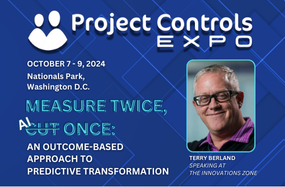
Construction Consultancy Services to Support the Construction Process Management

Did you know that LoadSpring offers consulting services through our trusted partners? Often, companies avoid hiring a business consultant because they aren’t sure when they need one or are unclear about the ROI of a consultant.
According to Digital Construction Works, a digital integrator “has a rare understanding of all sides of the equation and can supplement the skills gap and perform the alchemy of melding disparate applications, digital workflows, and best practices into an effective whole/process.”
The Critical Path: Consultants & LoadSpring Partnerships
Through our Partner Accelerator by LoadSpring (PAL) program, we offer consultancy services for several phases of the construction process: initiation, planning & scheduling, execution, and claims management—along with providing building information modeling (BIM) services. Let’s examine each phase in-depth, beginning with the initiation phase.
Essential Construction Project Element: Initiation
The initial, or preconstruction, phases of a project involve what’s called a Project Initiation Document (PID). According to The Digital Project Manager, this document “defines the project scope, management, and overall success criteria to which the team can return during the project. It contains the basic information of the project, such as context, scope, team, and collaboration. It is equally important as an internal guide and for external stakeholders.”
For construction projects purposes, especially, it is helpful for the PID to be a living document that can be edited and revised at any time—since timelines and factors like contractor schedules are prone to last-minute changes. Also known as a project charter, the document includes the business case and project requirements.
No matter how professional a consultancy agreement looks, it could go haywire quickly if the communication is faulty. Lack of good communication can cause poor compliance or budget issues, so effective communication is critical to successful construction project execution, no matter the circumstances. Therefore, some guidelines can help ensure the transparent transmission of information: establish a communication chain of command, choose a communication method appropriate for the message; be an active listener; be clear and concise; keep written communication professional. And adhere to facts.
In the preconstruction stages, the conceptualization, design, and bidding still need to be accomplished. During this time, key performance indicators and overall feasibility and validation are also determined.
How a construction consultant can help
Construction consultants will work with you to help determine the programming and feasibility of a project’s objectives and aims. Once these considerations have been made, they’ll help you prepare a PID grounded in historical precedent and best practices. Consultants will then advise you in drawing up the schematic design of the project, along with contract documents to be utilized by those placing bids to work on the project. After the project charter has been created with deliverables clarified and objectives confirmed, it will be time to appoint the team. A construction consultant can advise you during this process.
Essential Construction Project Element: Planning & Scheduling
The next phase of construction consultation is the planning and scheduling stage. Aside from the elements that are relatively intuitive to decipher—scope, communication plan, and risk management plan—there are the more mysterious components of work breakdown structure (WBS), integrated master plan (IMP), integrated master schedule (IMS), and critical path method (CPM) scheduling.
Let’s look at these latter factors to see what they entail respectively. According to Berton Manning, the Integrated Master Schedule (IMS) is a time-based schedule containing networked, detailed tasks necessary to ensure successful program or contract execution. It is used to verify the attainability of contract objectives, evaluate progress toward meeting program objectives, and integrate the program schedule activities with all related components.
Forbes defines a work breakdown structure (WBS) as “a project management tool that takes a step-by-step approach to complete large projects with several moving pieces. A WBS can integrate scope, cost, and deliverables into a single tool by breaking the project into smaller components. While most WBSs are deliverable-based, they can also be phase-based.”
Though it may sound complex, significant components of a typical WBS include acceptance criteria, budget, deliverables, milestones, and phases. In other words, it breaks down the details of a work project as described within the name.
One unique aspect of the WBS is the 100% rule—meaning that the WBS “encompasses all aspects of the project, as well as the person or team responsible for that component.” There’s also the leveled structure, meaning that there are levels of the project that go in sequential order so that all work from the first level must be completed before moving on to the second level.
How a construction consultant can help
Any thorough construction consultancy will ensure planning and scheduling details are thoroughly outlined. This will assure all stakeholders that work plans are budgeted, communicated, and understood before any work gets underway—for everyone’s legal protection and peace of mind.
Essential Construction Element: Execution
The significant elements of construction project execution include resource management, financial management, quality assurance, and compliance. High quality is one of the most critical elements that should be present in a successful construction project.
Grace Ellis recently covered the topic of construction quality in Digital Builder, explaining what it is, how it’s measured, why it matters, and how to improve it. One issue headlined lately is extreme climate records and the heatwave in Europe and the UK. Because sustainability has become more critical to many of us, sustainable building design is becoming more popular among conscientious firms hoping to make a difference. Building materials like modern cement and responsibly sourced or repurposed timber are sourced with circular economy and eco-friendly principles in mind, and they can decrease the project’s carbon footprint. Another newer technique is using repurposed building materials whenever possible. This method is still relatively untapped—gaining ground but not widely utilized yet. However, the concept is a popular one.
It makes sense to define construction execution by the quality of the work since that is connected to resource management, financial management, and compliance. As Ellis emphasizes, “Quality in construction means that projects are finished within the guidelines established by the Scope of Work.”
She goes on to emphasize that time management, meeting agreement requirements, and budget adherence also relates directly to quality management—which also affects your bottom line, helping to acquire repeat customers and prevent unnecessary rework. One of the critical indicators, resource management, may be measured by how well contractors manage one of the primary resources: time. Completing a project on schedule goes a long way to determining the quality of a project after execution. Another major factor is whether contractors and managers can stick to the projected budget.
McKinsey also recommends a project delivery hub (PDH) to provide complete management transparency throughout the project management process. They recommend asking three questions to help determine whether establishing a PDH would be beneficial:
- Is the project on time and within budget?
- Is everything being done to identify and deliver the project’s full potential?
- If the answer to either of the first two questions is “no,’ does the project have enough…competent resources to deliver insights and effectively translate those insights into actionable improvement interventions?
How a consultant can help
During the execution phase, a construction consultant can help guide and inspect the work via periodic inspections and random checks. They can also outline any discrepancies between planning documents and the final product if necessary.
Essential Construction Element: Claims Management
There are numerous elements involved in claims avoidance and management in construction: baseline schedule and constructability analysis; schedule update analysis; schedule quality assurance and control; risk analysis; time impact analysis; schedule disruption analysis; productivity impact evaluations; acceleration claims; damages computation; claim preparation & presentation (bilingual-English and Spanish); construction mediation, litigation, and arbitration; support (bilingual-English and Spanish); and expert testimony (bilingual-English and Spanish).
Research has been done on best practices, in the event of a delay, for example, during inclement weather events (likely to be a widespread occurrence). All parties are legally protected if allowances for climate change or other extenuating circumstances are written into the claim. See this example outlining scheduling specifications, establishing schedule evaluation standards, defining unpredictable weather conditions, etc.
As this article on construction project management essentials emphasizes, it makes sense to keep plans flexible and open-ended, continuing to plan throughout the project—rather than pushing tight schedules or rules that can’t be altered. They cite the software industry’s Lean-Agile approach, which incorporates plan adjustment into the methodology. All parties feel included and understood by taking the time to communicate regularly with all stakeholders and asking questions of everyone involved.
Moreover, by being willing to manage risk and keeping everyone on the same page, all parties feel heard and able to discuss any issues that may arise during construction or closeout. Lest we forget the less pleasant aspects of claims management, it is advisable to determine the projected costs of labor, materials, equipment, subcontractors, and overheads & profit to prevent claims avoidance. Moreover, all parties should collect records related to contract documentation, works records sheets, daily staff, and so on.
How a construction consultant can help
In the unfortunate event that you must deal with claims management, a construction consultant can help advise you from a seasoned perspective, offering professional advice, knowledge of legal jargon, experience in handling different types of claims, legal protection, and knowing which course of action to take.
So, What’s the ROI of Construction Consultant?
LoadSpring’s world-leading cloud services and secure, fast, on-demand access—coupled with a consulting firm’s experience in risk management, duration control, and cost scheduling—will ensure that LoadSpring customers get the highest possible productivity and return on investment. High-value, complex delivery program management necessitates a 50,000-foot view. This insight is available via LoadSpring’s executive dashboard, built directly into the project platform, connecting you to valuable analytics.
This is the profound, sweeping oversight and insight you could have if you enlist LoadSpring’s construction consultancy services for your next project management venture.
Suppose your company intends to embark upon a significant construction project soon, and you anticipate seeking professional solutions. In that case, LoadSpring can provide industry-weathered cloud-based project intelligence and experienced construction consulting services. We believe long-term, impactful partnerships are central to helping our customers achieve project success. We work with and alongside trusted partners looking to make an impact so every project can succeed. We can’t do it alone, and you shouldn’t have to, either. Partnering with companies who share our drive for innovation will lead to an even higher impact. Contact us at +1 877 562 3777 in the US and +44 800 088 5889 in the UK.








